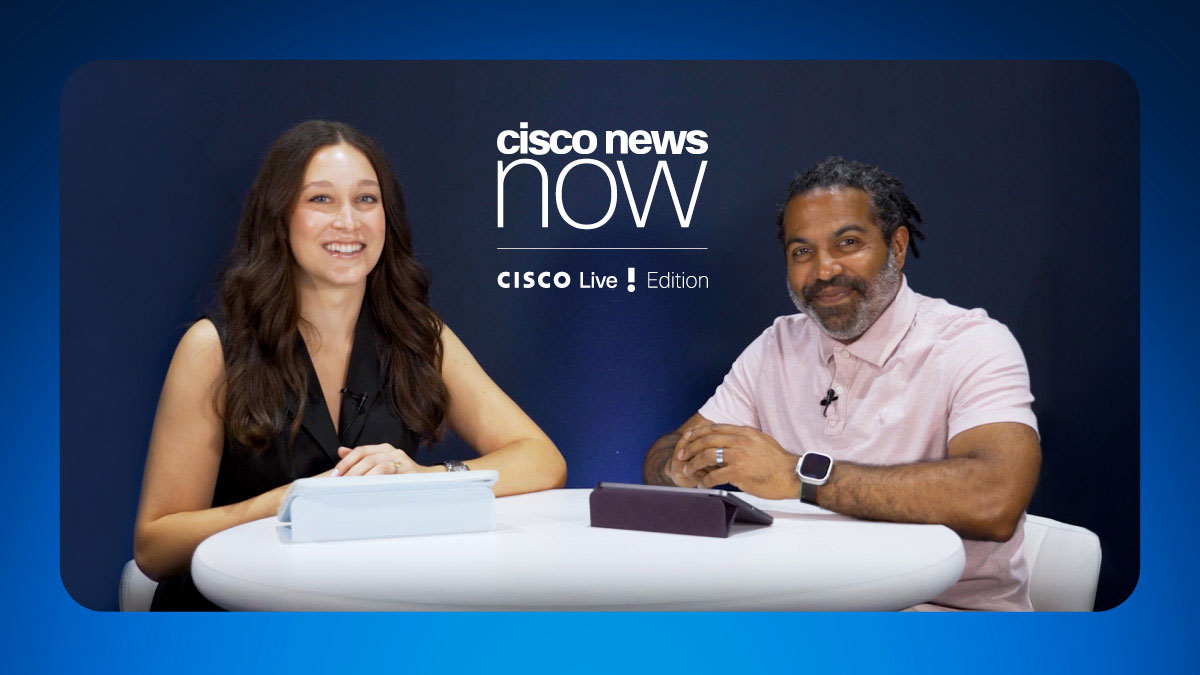SAN JOSE, Calif. -- February 10, 1998 -- Cisco Systems, Inc. today announced further enhancements to the Catalyst. 5000 family as well as a range of gigabit networking solutions for both the Catalyst 5000 family and the Cisco 7500 series of high-end routers. These new products give networking professionals additional high-performance options and a smooth migration path to build, scalable, multilayer gigabit campus networks in both enterprise and service provider environments.
The new products introduced include the Catalyst 5505, the Supervisor III switching engine, the NetFlow feature card (NFFC), Gigabit Ethernet uplinks, an OC-12 module, a three-port Gigabit Ethernet switching module, a nine-port Gigabit EtherChannel( switching module and for the Cisco 7500 series of routers, Gigabit Ethernet Interface Processors (GEIPs). These new options leverage Cisco's industry-leading Gigabit Ethernet switching technology, which was publicly demonstrated at NetWorld+Interop in the fall of 1997.
"To build and maintain a corporate network that regularly transmits trillions of bits of data per day, any new networking solution must have several key essentials: performance, scalability and investment protection," said Kelly Carpenter, network analyst for the Genome Sequencing Center at Washington University. "Cisco's Catalyst 5000 family coupled with Cisco 7000 series routers consistently provide us with all the options we need to not only maintain, but expand and enhance our backbone network for the future."
High-Performance Gigabit Networking Solutions
The Catalyst 5000 family will accommodate a range of high- and low-port-density Gigabit Ethernet line modules via technology successfully integrated from the Granite Systems acquisition.
The Gigabit Ethernet options available for the Catalyst 5000 series are a three-port switching module for server farms and a nine-port Gigabit EtherChannel switching module. The three port cards have a switching capacity of 6 gigabits while each of the nine-port line cards can handle 24 gigabits of switching capacity. In addition, there are two gigabit Ethernet modular uplink ports which can be supported on the new Supervisor III engine.
For the Cisco 7500, the new GEIP is the first member of Gigabit Ethernet products for the Cisco 7000 family routers. It is designed to provide connectivity to Gigabit Ethernet-switched networks from the extensive LAN and WAN services supported by the Cisco 7500. The GEIP can support a variety of media types including 1000Base-SX for short range and 1000Base-LX for intermediate range fiber interconnects.
Easy Upgrade to Standards-Based Gigabit Ethernet
In order to ensure future flexibility, standards compliance and investment protection, Cisco has designed its gigabit solutions using industry-standard gigabit interface converters (GBICs) for the physical connections into the system. These small connectors enable customers to quickly and easily swap physical interface options on a port-by-port basis depending on their distance needs and allows for future expandability. Furthermore, if there is a change to the transceiver specifications in the Gigabit Ethernet standard, only the GBICs need to be changed, not the entire box. This avoids the costly burden and risks associated with bringing down the network to replace a noncompliant switch.
To further enhance high-speed connectivity, Cisco is also implementing Gigabit EtherChannel on the nine-port gigabit switching modules for the Catalyst 5000 family. Gigabit EtherChannel enables up to eight Gbps of throughput between Cisco switches by grouping together four Gigabit Ethernet links to be combined into a single logical link that automatically load balances and provides failover of less than one second.
Cisco continues to ship thousands of Fast EtherChannel ports in a range of solutions for the Catalyst 2900, Catalyst 5000 and Cisco 7500 series. Many customers have implemented Fast EtherChannel because it yields up to 800 Mbps of full duplex, resilient bandwidth and runs over standard media for distances of up to two kilometers.
Advanced Multicast Support
Many networked multimedia applications place not only a heavy load on the network, but require a high degree of intelligence to be embedded into the system. The Catalyst 5000 family and the Supervisor III engine now enable wire-speed multicast traffic to be supported simultaneously on up to 266 10/100-Mbps ports. Thus, the Catalyst 5500 can switch over 40 million pps and customers are still able to set up and maintain robust, intelligent networks that handle multicast traffic extremely well.
"At Microsoft we have developed a strategy to deploy multicast services across our worldwide network infrastructure to support multicast enabled applications like NetShow and NetMeeting. During our selection of products for this deployment, we were especially impressed with the Catalyst architecture and how it handles multicast and broadcast packets," said Sunjeev Pandey, senior network engineer at Microsoft Corporation's Information Technology Group. "As a result, the Catalyst product is used at the heart of our network where its packet-forwarding rates combined with its support of intelligent IGMP pruning provide exactly the type of solution we are looking for."
High Port Densities, Proven Technologies and Multilayer Performance
With the new Gigabit Ethernet modules, the Catalyst 5500 offers industry-leading port densities of 32 Gigabit Ethernet ports, 264 10/100BaseT, or 526 10BaseT connections with capacity of 75 gigabits and 56 million packets-per-second (pps) performance. The five-slot Catalyst 5505 can support over 50 gigabits of switching capacity, 38 million pps, and can have up to 20 gigabit Ethernet ports, 96 100BaseT or 196 10BaseT connections.
Additionally, the Catalyst 5505 and 5500 support redundant power supplies and supervisor engines. This capability gives customers the ability to run their networks with minimal network downtime. Furthermore, all Catalyst 5000 family members support hot-swapping of modules so the network is always operational - even as changes take place real-time.
Because the demands on the network are greatest in the backbone, networking professionals need to employ fast systems that have high capacities, high availability and possess all of the Layer 3 features and functionality they have come to rely on. This functionality includes comprehensive support for: IP routing protocols such as OSPF, RIP II, IGRP and Enhanced IGRP; multicast protocols like CGMP, IGMP DVMRP and PIM; mobility protocols like DHCP and IP mobility; HSRP for resilience; and support for multiprotocol environments that have IPX, DECNet, and AppleTalk traffic.
To support fully functional Layer 3 performance, the combination of the Route Switch Module (RSM) and the NFFC on the Supervisor III engine makes the Catalyst 5000 family an ideal high-density platform to scale the bandwidth in corporate networks without compromising network functionality or basic operations. When equipped with Cisco's Layer 3 solutions, the Catalyst 5000 family of products can switch multiple millions of packets per second while leveraging the extensive network services inherent in Cisco IOS® software such as quality of service, security, network management, accounting, monitoring and multicast functionality. Future additions to the Catalyst family of products will scale Layer 3 performance to 20 million packets per second for both IP and IPX traffic. This advanced technology will also be leveraged within the Catalyst 5500 platform for investment protection and flexibility.
Paths to Gigabit Ethernet or ATM
To provide customers with a smooth migration path for either Gigabit Ethernet or Asynchronous Transfer Mode based networks, Cisco continues to evolve its Catalyst product line to offer a range of options that seamlessly fit into today's high-performance environments.
Cisco has added an OC-12 ATM LAN Emulation (LANE) module that can provide media-rate LANE performance with the ability to support multiprotocol over ATM MPOA as a future software upgrade. Each OC-12 card can support up to 1.22 Gbps of throughput and can be configured with dual physical connections for redundancy.
As networks continue to evolve and change in the future, customers demand that their investments in networking solutions be protected. A key advantage of the Catalyst 5000 architecture is the assurance that line modules remain consistent throughout the system as customers migrate to multilayer gigabit networks, whether frame or cell based.
Cisco Systems
Cisco Systems, Inc. (NASDAQ:CSCO) is theworldwide leader in networking for the Internet. News and information areavailable athttp://www.cisco.com.
Cisco IOS is a trademark, and Cisco, Cisco Systems, and the CiscoSystems logo areregistered trademarks of Cisco Systems, Inc. in the U.S. and certain othercountries. All othertrademarks mentioned in this document are the property of their respectiveowners.



